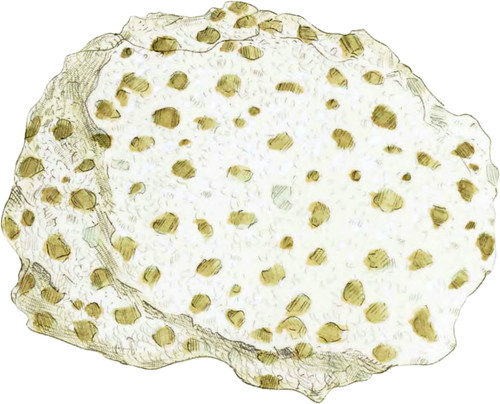 Enlarge
Enlarge
British Mineralogy
Kaolin
This substance (found at St. Stephen's in Cornwall, &c.) has long obtained the name of Kaolin because of its resemblance to the Earth so called in China, on account of its being used in Porcelain manufactories, and is by some considered as necessary to be used with the Petuntse for hardening the mixture for the better sort of Porcelain. It is a kind of decomposed Granite, being an aggregate of Feldspar, Quartz, and Talc, and is, for some purposes, ground up together to make Crucibles, but it depends upon the proportion of the three ingredients to determine how it may best be used. If carefully separated and washed, the decomposing Feldspar, with what Talc and perhaps fine Quartz are among the washing, make the Porcelain Clay, (Feldspath argiliforme of Haüy,) commonly so called, and the difference observed by Wedgewood, viz. of 60 parts of Clay, and 10 of Quartz, depends upon circumstances that seldom allow any aggregate rock to be very regular.
Authors differ in the analysis thus;
| Silica | 52 to 71 |
| Alumine | 15 to 41 |
with occasionally a little Lime, Magnesia, Sulphate of Barytes, and perhaps Iron, which may sometimes give a redness more or less common in Feldspar.
One of its characters is, to be infusible: this, however, may depend upon the proportion of the mixture. Some say it is infusible in a porcelain-heat; others say, nearly infusible in the greatest heat of a porcelain furnace. According to Achard, Kirwan, v. 1. p. 58, determines that Argil and Silex are infusible in all proportions. Kirwan, v. 1. p. 66, says, three parts of Argil and three parts of Silex with one of Magnesia form a Porcelain. Other proportions of the same substances remained as a powder, hardened only or formed a Glass, porous Enamel, Porcelain, &c. This shows the necessity of having a knowledge of the nice distinctions sometimes necessary in comprehending nature. It was with a Clay of this kind that Wedgewood formed his pyrometers; but it is said that after the mixture was exhausted he could not venture to make any more, as he could not find Clay that he could depend upon as having the same proportion of parts, and consequently could not produce any precisely of the same standard.
Earths of this kind are found wherever Granite rocks occur in a decomposing state in greater or loss abundance, differing in the size or quantity of the different ingredients, the Quartz in lame or small grains, with more or less Talc, which holds Magnesia, and perhaps helps the decomposition when in contact with the air, which last seems necessary, as Granite is never considered as Kaolin till thus decomposed, although perhaps containing the same substances, It is curious to remark that these substances, afforded by nature to suit our particular purposes, are generally known by some external characters which distinguish them in a general way, and those used to it do not care to venture on any other. In this instance the substances may vary much, as is seen by the analysis; and perhaps the less decaying rock might, by affording a more suitable proportion of parts, sometimes answer the purpose better. The decaying rock is, however, more easily gathered. This may be convenient to be known to those whose estates are contiguous to the other necessaries for porcelain manufactories.
The specimen figured shows irregular spots or grains of Quartz, with some shining greenish particles of Talc; the remainder is chiefly Earthy Feldspar or Petuntse.

